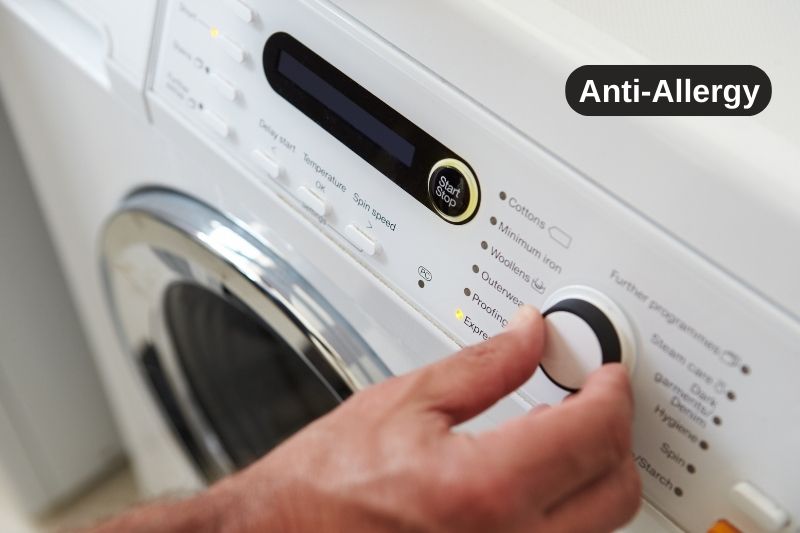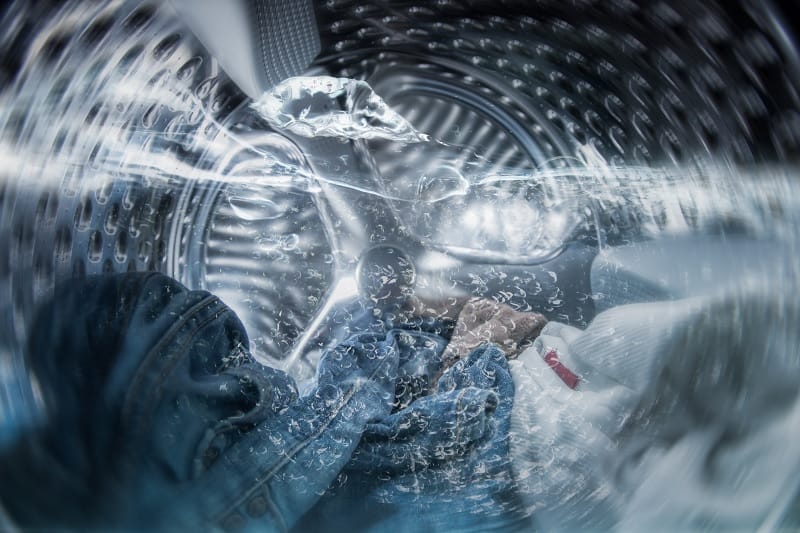Living with allergies can present daily challenges, turning seemingly mundane tasks into potential sources of discomfort.
For many, the simple act of doing laundry can be a minefield of allergens, from dust mites to pollen clinging to clothes. Even some detergents and fabric softens can trigger allergies!
If you’re fed up with sneezing and coughing each time you do laundry, something as simple as choosing the correct washing programs can make your life easier.
Enter the “anti-allergy” setting in washing machines – a feature designed to offer respite to anyone with allergies and sensitivities.
But what is “anti-allergy” in a washing machine? Can this setting really remove allergens from the machine? And how else can you choose more comfortable and allergen-reduced laundry practices?
What Does the Allergy Setting on a Washing Machine Do?
The anti-allergy setting on your washing machine is a special washing cycle designed to help remove irritants from your clothes.
Not all washing machines have anti-allergy settings, but those that do aim to provide cleaner and more allergen-free laundry results.
Even among anti-allergy washing machines, the allergen-busting cycles are often called different names.
For example, Bosch has a “Hygiene Plus” setting, Sharp washing machines call their allergy care program “Allergy Smart,” and Samsung washers have a program called “Hygiene Steam.”
The specifics of each cycle also vary by brand but generally include these features:
- Hot water wash: Washing clothes with hot water can help remove allergens effectively. Therefore, most allergy settings use water temperatures of 40°C to 60°C. This is enough to banish most germs and dust mites, while some washers reach even higher temperatures.
- Extra rinse cycle: Most anti-allergy settings on washing machines also have an additional rinse cycle. This extra rinse helps to ensure that all detergents and allergens are thoroughly rinsed away, leaving your clothes and linen allergy-free.
- Steam cleaning: Some advanced washing machines incorporate steam cleaning into their anti-allergy cycles, such as Samsung’s “Hygiene Steam” setting. Steam is released into the drum to remove pollen, dust mites, and other allergens.
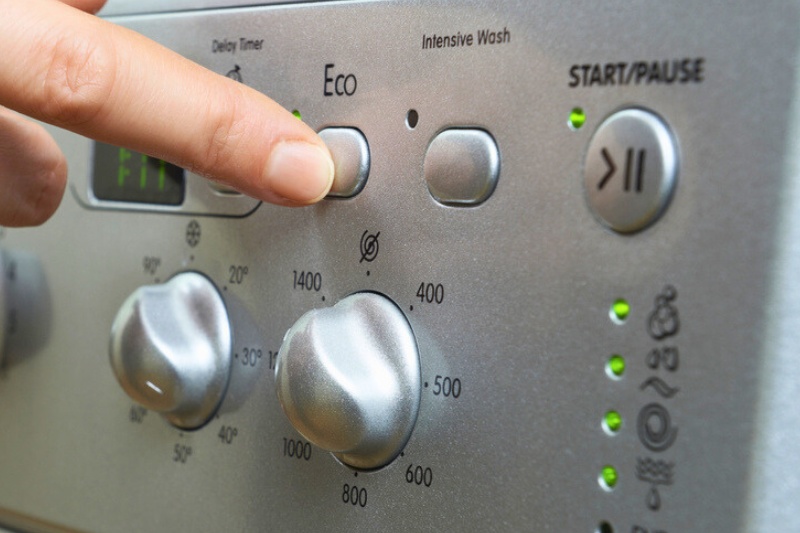
Who Should Use Allergy Care on a Washing Machine?
The allergy care setting on a washing machine is designed to reduce allergens and irritants in clothing. This makes it beneficial for anyone with allergies or sensitivities to certain substances.
Here are some scenarios where using the allergy care setting might be particularly useful:
- Individuals with allergies: If you or someone in your household has allergies to common allergens (such as dust mites, pollen, pet dander, or mould), using the allergy care setting can help minimise these allergens in clothing.
- Sensitive skin: People with sensitive skin may also benefit from the reduced presence of allergens in their clothes. The allergy care setting can provide a thorough cleaning that removes potential irritants from fabrics.
- Asthma sufferers: Individuals with asthma may find relief by using a washing machine with an allergy care setting, as it can help reduce the presence of airborne allergens that might be present in clothing.
- Infants and young children Babies and young children often have more sensitive skin, making them susceptible to skin irritation and allergies. Washing their clothes using the anti-allergy setting can be a good practice to minimise potential irritation.
How Can You Reduce Allergens in a Washing Machine?
It’s important to note that while the anti-allergy setting can be helpful, it may not completely eliminate all allergens from your washing machine and clothes.
Other measures are equally as necessary for managing allergies effectively.
1. Regularly clean your washing machine
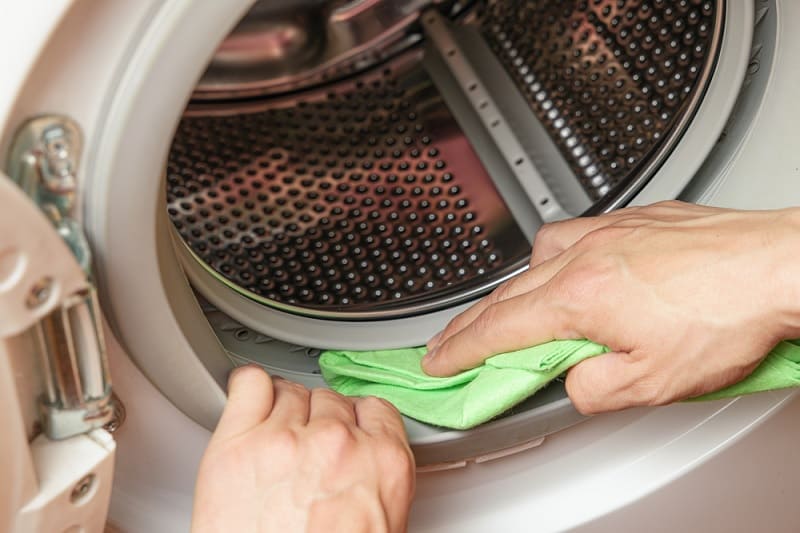
Regular cleaning can help reduce the number of allergens in the washing machine. And not only this, but cleaning your washer also comes with several other benefits—it helps extend the lifespan of your machine, prevents cross-contamination, and ensures optimal performance.
Below are the basic steps on how to clean a washing machine:
- Clean the detergent dispenser: Remove and clean the detergent dispenser regularly to prevent the buildup of residues (detergent, fabric softeners, bleach, etc.) and mould. These can introduce more irritants to your clothes and lead to bad odours.
- Run a maintenance cycle: Many washing machines have a self-cleaning or maintenance cycle. Follow the instructions for running this cycle to remove any bacteria, mould, mildew, and grime that has accumulated in the machine.
- Clean the rubber seal: Wipe down the rubber seal around the door, as mould and mildew can accumulate in this area. Both of these are allergens that can transfer onto materials and need to be removed regularly.
- Clean the drum: Run a hot water cycle with a washing machine cleaner or a mixture of vinegar and bicarbonate of soda to clean the drum. Using natural products instead of chemical ones also ensures fewer chemical irritants are introduced into your laundry.
If you need more help, you can read our more detailed washing machine cleaning guide.
2. Use allergen-free detergents

Also known as hypoallergenic laundry detergents, allergen-free detergents are formulated to be gentle on sensitive skin while effectively cleaning clothes. Most hypoallergenic laundry detergents share these common features:
- Fragrance-free: Many hypoallergenic detergents are free from added fragrances. Although these added scents may smell nice, dermatologists explain that artificial fragrances can be a common source of irritation for people with sensitivities.
- Dye-free: Dyes in traditional laundry detergents can also trigger allergic reactions or irritation when not properly washed out of your clothes. Allergen-friendly laundry detergents are therefore often free from artificial colours.
- Gentle formulation: Hypoallergenic detergents typically have milder formulations and more natural ingredients. These gentle ingredients can neutralise allergens without introducing chemicals that may cause skin irritation.
- Dermatologically tested: Some hypoallergenic detergents undergo dermatological testing to ensure they are less likely to cause skin reactions. One of the best laundry detergents dermatologists have tested includes Fairy Non-Bio Gel.
If you use fabric softeners in your laundry routine, you’ll also want to ensure you’re using a fabric softener for sensitive skin, too.
3. Wash clothes at high temperatures
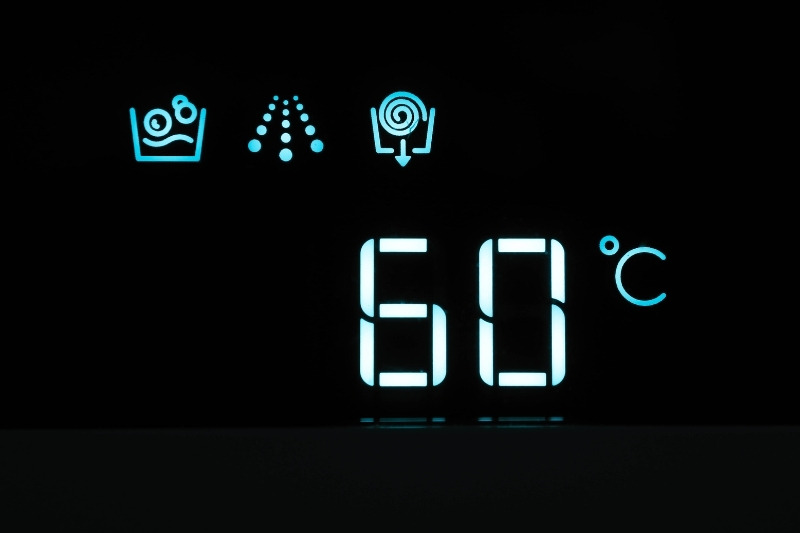
Even if your washing machine doesn’t have an anti-allergy setting, you can minimise allergens by washing your clothes at high temperatures.
Hot water temperatures help break down and remove a wide range of allergens from clothing fibres, such as:
- Dust mites: Dust mites, a common allergen trigger, thrive in warm and humid environments like washing machines. Washing bedding and clothing with hot water can help kill dust mites and their eggs, reducing the overall population in your laundry.
- Mould and mildew: Hot water can be effective in preventing the growth of mould and mildew on clothing. Mould spores are allergenic and can contribute to respiratory issues. This is especially useful if you or a family member has asthma.
- Bacteria and germs: High temperatures can help kill bacteria and germs present on clothing, leaving your garments clean and hygienic. This is particularly important for individuals with allergies or compromised immune systems.
- Residual allergens: Hot water is more effective at removing residues of detergents and fabric softeners, which may contain allergens or irritants. Running an extra rinse cycle also helps to wash away all these residual substances.
While washing clothes at higher temperatures can be beneficial for minimising allergens, it’s essential to consider the fabric care instructions.
Some materials are unsuitable for hot water washing, and your garments may shrink or get damaged.
Silk, lace, cashmere, and wool are all examples of delicate materials that cannot withstand hot water washes.
Before running the anti-allergy setting or a more general hot wash program, always refer to and follow the care label instructions to ensure proper cleaning without damage.

Hannah has a passion for cleaning. She worked her way around Australia by cleaning hostels in exchange for free accommodation and used her cleaning skills to bag a job as a chalet host for a luxury ski company in France.
